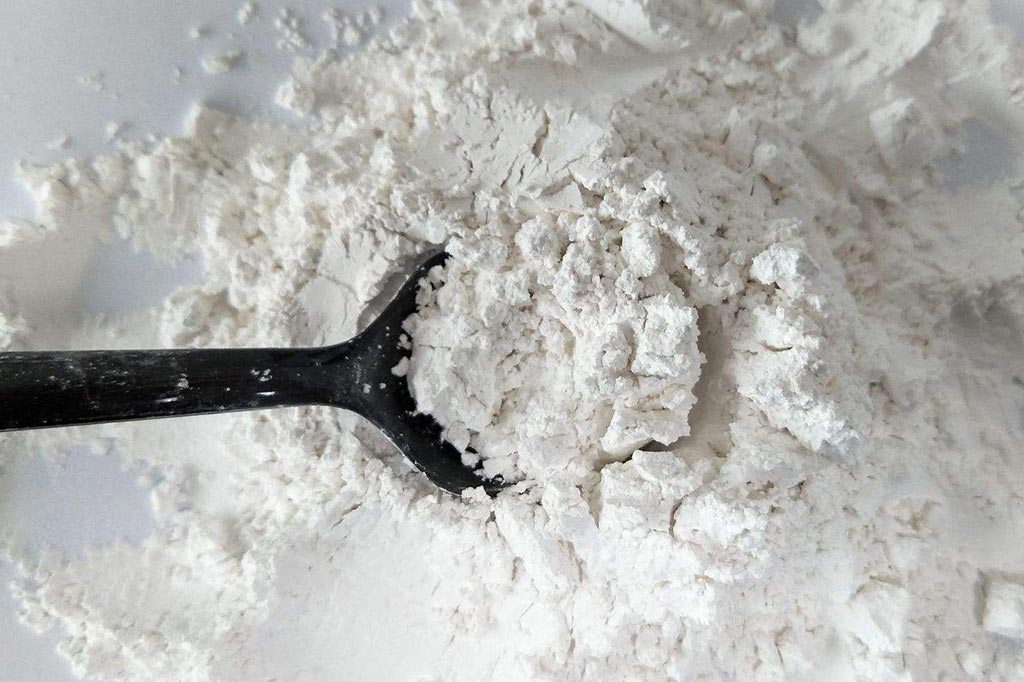Why should calcium carbonate be surface modified
Surface modification is an important means necessary to improve the application performance of calcium carbonate, improve applicability, expand the market and consumption. In the future, functionalization and specialization will become the main trend of calcium carbonate development, and the market demand for various surface modification special calcium carbonate The amount will get bigger and bigger.

Why should calcium carbonate undergo surface modification?
- Improve the dispersibility of calcium carbonate
Ultra-fineness is an important way to improve the quality of calcium carbonate, but the smaller the particle size of calcium carbonate, the higher the surface energy, the stronger the adsorption, and the more serious the agglomeration phenomenon.
Through surface modification, the modifier can be oriented to adsorb on the surface of calcium carbonate, so that the surface has charge characteristics. Due to the repulsion of the same kind of charge, calcium carbonate is not easy to agglomerate, thereby achieving good dispersion in the matrix.
- Improve the compatibility of calcium carbonate
Through surface modification, the interface compatibility and affinity between calcium carbonate and organisms can be increased, thereby improving its product performance with rubber or plastic composite materials.
- Reduce the oil absorption value of calcium carbonate
Surface modification is an important means to reduce the oil absorption value of powder. After the surface modification of calcium carbonate, the aggregated particles are reduced, the degree of dispersion is improved, and the gap between the particles is reduced. At the same time, the coverage of the surface of the calcium carbonate by the modified molecules reduces the voids in the particles, and this coverage also changes the calcium carbonate. Its surface properties weaken its surface polarity, the friction between particles becomes smaller, and the lubricity becomes better, so the packing becomes tighter, the packing density increases, and the oil absorption value decreases.
- Broaden the high-end application market of calcium carbonate
Calcium carbonate without surface modification has poor compatibility, is easy to agglomerate, and has poor application effects, and these shortcomings become more obvious as the dosage increases.
Through surface modification, calcium carbonate has good interface affinity and reduced oil absorption. It can be better applied to high-end fields such as plastics, coatings, rubber, paper making, sealants, and breathable membranes to improve product quality and further reduce application companies’ Cost of production.
- Give calcium carbonate more functional properties
Calcium carbonate without surface modification can only be used as a traditional filling material, and its application field and dosage will be subject to certain restrictions. Through surface modification, calcium carbonate becomes a multifunctional modifier.
Calcium carbonate coated with silica on the surface can partially replace white carbon black and supplement the shortcomings of white carbon black in certain properties; light calcium carbonate coated with metal on the surface can improve certain special properties of rubber products; The calcium carbonate composite material coated with titanium dioxide can replace titanium dioxide to a certain extent; it can be treated with phosphate, aluminate, silicate or barium salt to prepare acid-resistant calcium carbonate.
- Increase the added value of calcium carbonate products
At present, my country's ordinary calcium carbonate has overcapacity, and competition for low-price products is fierce. After surface modification of calcium carbonate, the use effect is significantly improved, the user experience is good, and the product price naturally increases.
Application analysis of calcium carbonate in industrial fillers
In recent years, calcium carbonate has been widely used in the plastic filling industry because of its excellent properties and low price. Compared with other inorganic mineral powder materials, the color of calcium carbonate itself is whiter, with better stability and better plasticization.
1. Rubber industry
Calcium carbonate is one of the largest fillers used in the rubber industry. A large amount of calcium carbonate is filled in the rubber, which can increase the volume of its products and save expensive natural rubber, thereby greatly reducing the cost. Calcium carbonate is filled into rubber to obtain higher tensile strength, tear strength and abrasion resistance than pure rubber vulcanizates.

2. Calcium carbonate in the binder and sealant
Calcium carbonate is widely used as a filler in adhesives and sealants. It has the advantages of narrow particle size distribution, large specific surface area, low oil and water absorption, etc. It can improve its rheological properties in PVC plastisols, enhance and reduce costs in silicone structural sealants, and can play an incremental reinforcement and heat-resistant role in hot melt adhesives. The adhesive can play a role in thickening and thickening. Application in adhesives and sealants can significantly reduce costs and improve bonding performance.
3. Paper industry
The use of calcium carbonate in the paper industry can ensure the strength and whiteness of the paper, and the cost is low. It can make the paper have good brightness, solid structure, easy writing, uniform coating, low friction, easy to dehumidify and easy to dry.

4. Plastic industry
Calcium carbonate can play a role as a skeleton in plastic products, which has a great effect on the dimensional stability of plastic products, and can also increase the hardness of the products, and improve the surface gloss and surface smoothness of the products. As the whiteness of calcium carbonate is above 90%, it also replaces expensive white pigments.

5. Paint industry
The amount of calcium carbonate in the paint industry is also relatively large, for example, the amount of calcium carbonate in thick paint is more than 30%.

6. Water-based coating industry
Calcium carbonate has a wider range of uses in the water-based paint industry, which can make the paint non-sediment, easy to disperse, and have good gloss. The amount of water-based paint is 20-60%.
7. Chemical building materials
In recent years, a new type of composite material-calcium plastic material has appeared in the building materials industry. This material has many excellent properties of wood, plastic and paper. It has the characteristics of heat resistance, chemical resistance, cold resistance, sound insulation, shock resistance, and easy processing. In packaging, building materials, pipes, etc., it largely replaces paper and wood.
8. Application of calcium carbonate in medicine, food, feed, etc.
Calcium carbonate is one of the important components in the pharmaceutical industry's culture medium. In addition to providing Ca elements, calcium carbonate also acts as a buffer for pH changes during stable fermentation culture. Therefore, calcium carbonate becomes a buffer for microbial fermentation in the pharmaceutical industry. Among pharmaceutical reagents, calcium carbonate can generally be used as a filler, while in anti-acid tablets, it has a certain medicinal effect. Calcium carbonate can be used as a food additive, and a small amount should be added to food, usually not more than 2%, to ensure the intake of calcium necessary for the human body. Because under normal circumstances, the total amount of calcium in the human body is about 1200 grams, 99% of which are present in the bones and teeth, and 1% is an essential component in the human blood, so carbonic acid is used in various food additives. Calcium is also one of them.
Article source: China Powder Network
